Kentucky Butter Cake
This post may contain affiliate links. Read my full disclosure policy.
This old-fashioned vanilla butter cake drenched in syrup is the 1963 winner of the Pillsbury Bake-Off Contest.
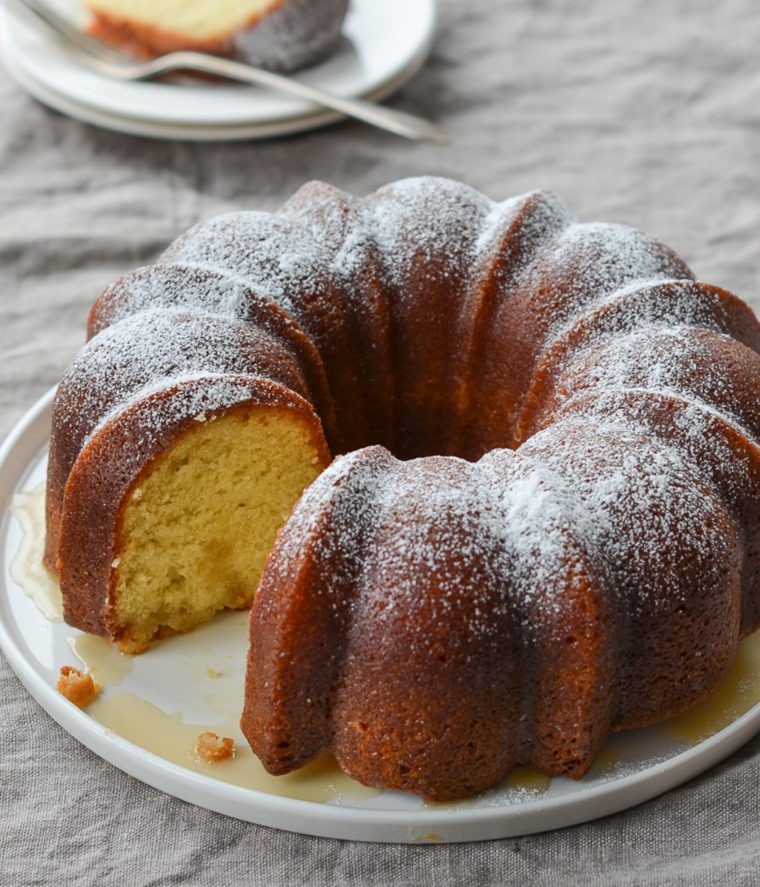
I have no clue why this delicious butter cake is named for the state of Kentucky, but the recipe has been around since at least 1963, when Nell Lewis of Platte City, Missouri entered it into the Pillsbury Bake-Off Contest and won. It’s an old-fashioned vanilla buttermilk pound cake drenched in a luscious butter and sugar syrup. The syrup not only adds exceptional moisture to the cake, but it also creates a crisp coating on the surface, almost like a glazed donut. Kids love it, grown-ups love it—this simple butter cake is hard to beat. A big thank you to my longtime reader, Karen Tannenbaum, for sharing the recipe with me.
What you’ll need To Make Kentucky Butter Cake
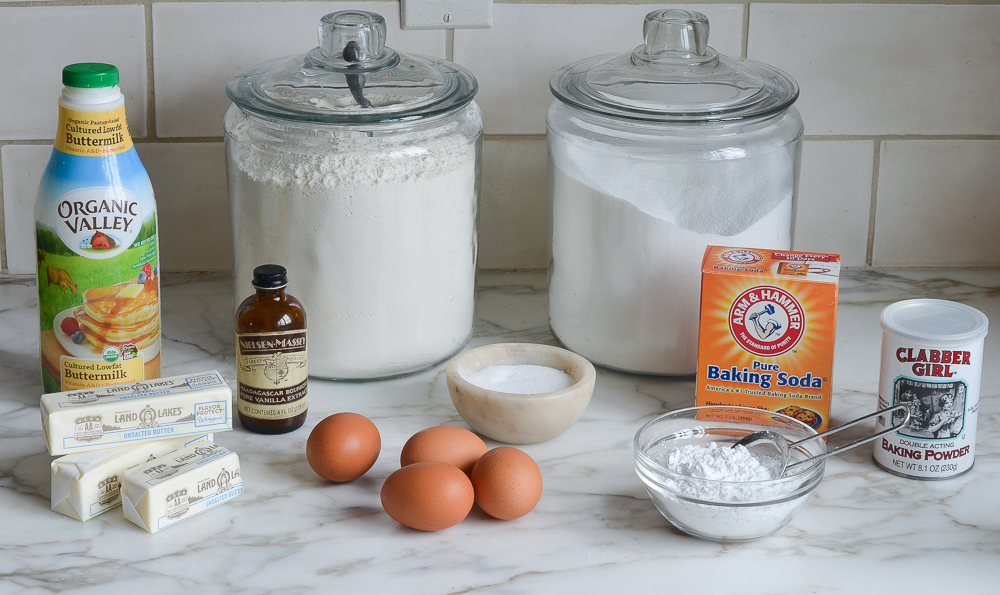
Before we get to the step-by-step instructions, a few words about the method. This butter cake is a “high-ratio” cake, which means that the weight of the sugar equals or exceeds the weight of the flour. Instead of the more common “creaming” method (where the butter and sugar are beaten together before the eggs, flour, and liquid are added), high-ratio cakes can be made using the “high-ratio” method, which involves mixing all the dry ingredients with the butter and some of the liquid first, then adding the remaining liquid ingredients.
The high-ratio method is not only easier than the traditional creaming method, but it also yields super tender and fine-textured cakes. (Other high-ratio cakes on the site include yellow cake, pound cake, rum cake, and marble cake.)
How to make kentucky butter cake
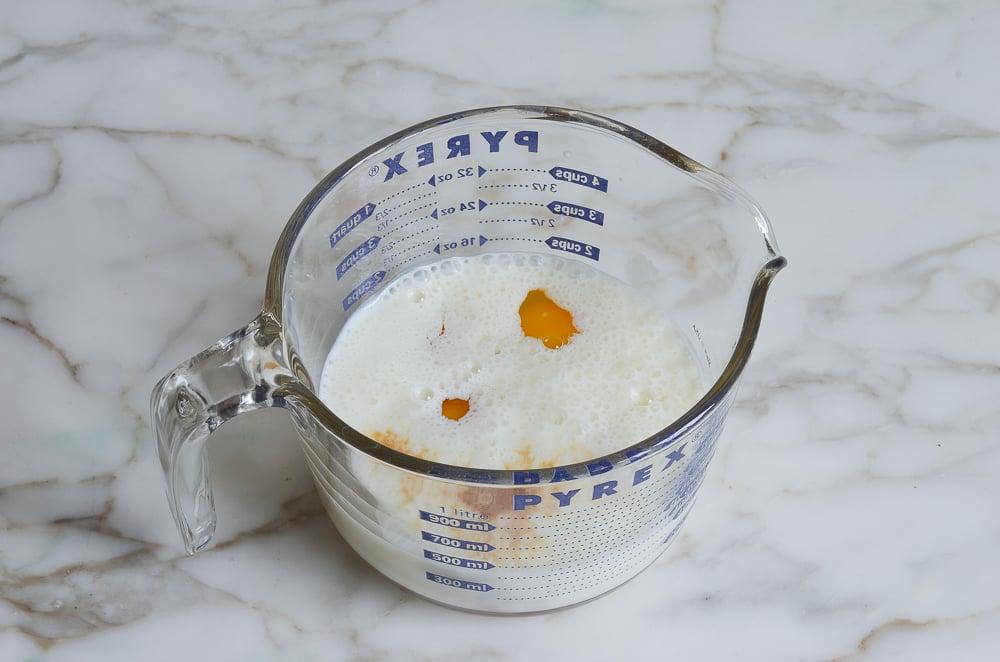 In a medium bowl or liquid measuring cup, combine the buttermilk, eggs, and vanilla.
In a medium bowl or liquid measuring cup, combine the buttermilk, eggs, and vanilla.
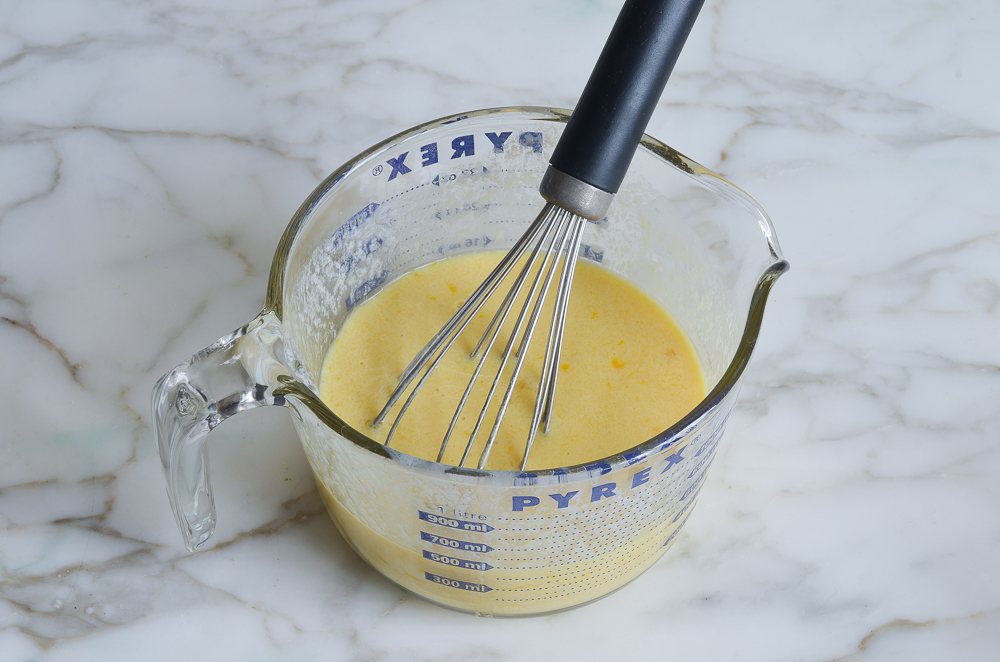
Whisk and set aside. (Note that the mixture will start to look curdled as it sits; that’s okay.)
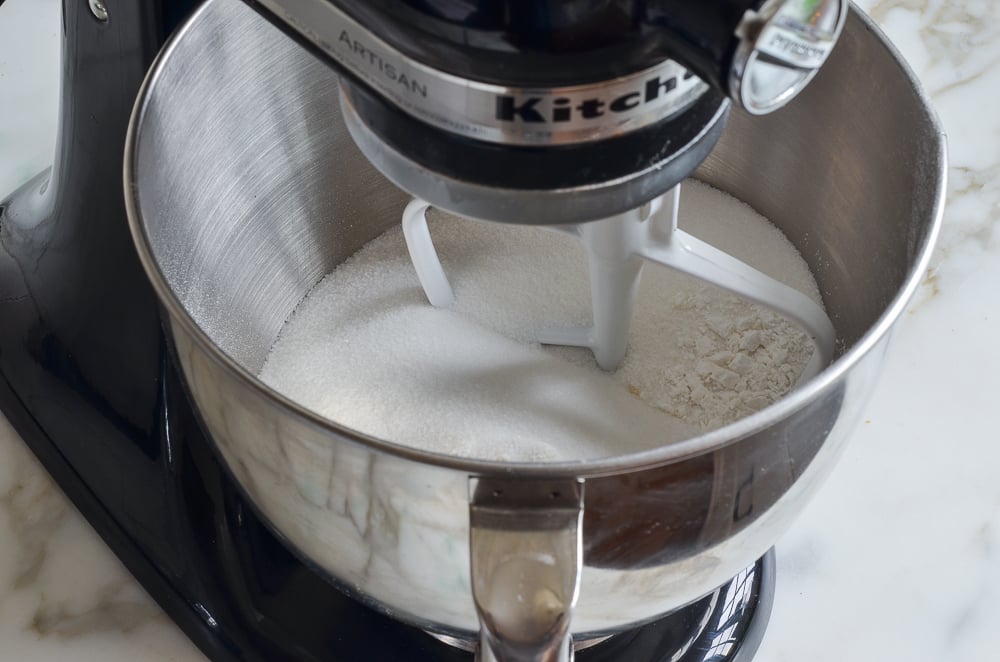
In the bowl of an electric mixer fitted with the paddle attachment or beaters, combine the flour, granulated sugar, baking powder, baking soda, and salt. Beat on low speed for 30 seconds to combine.
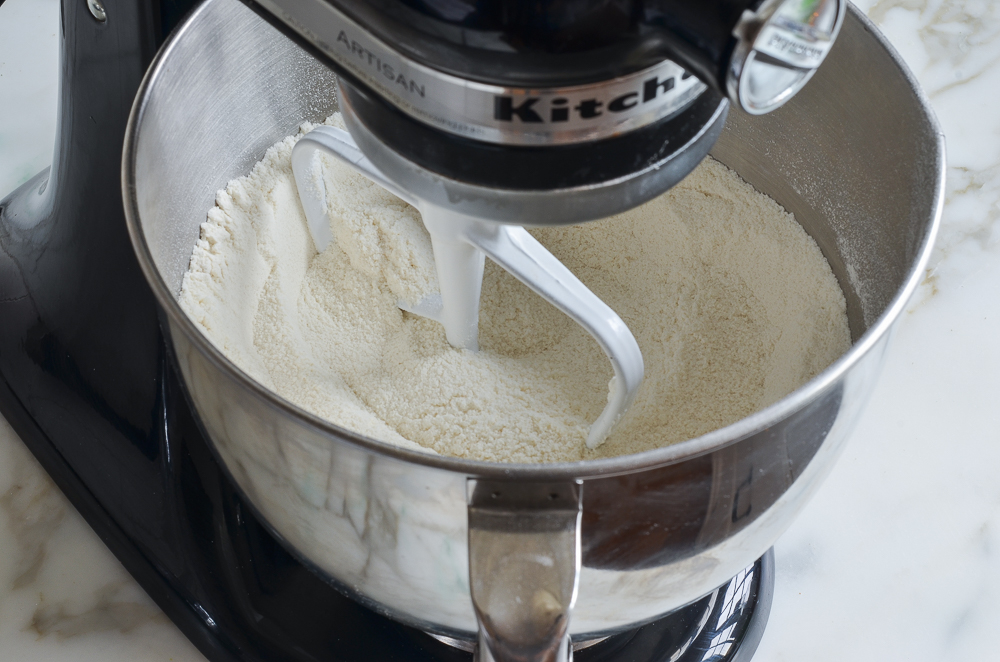
Add the soft butter and half of the buttermilk mixture. 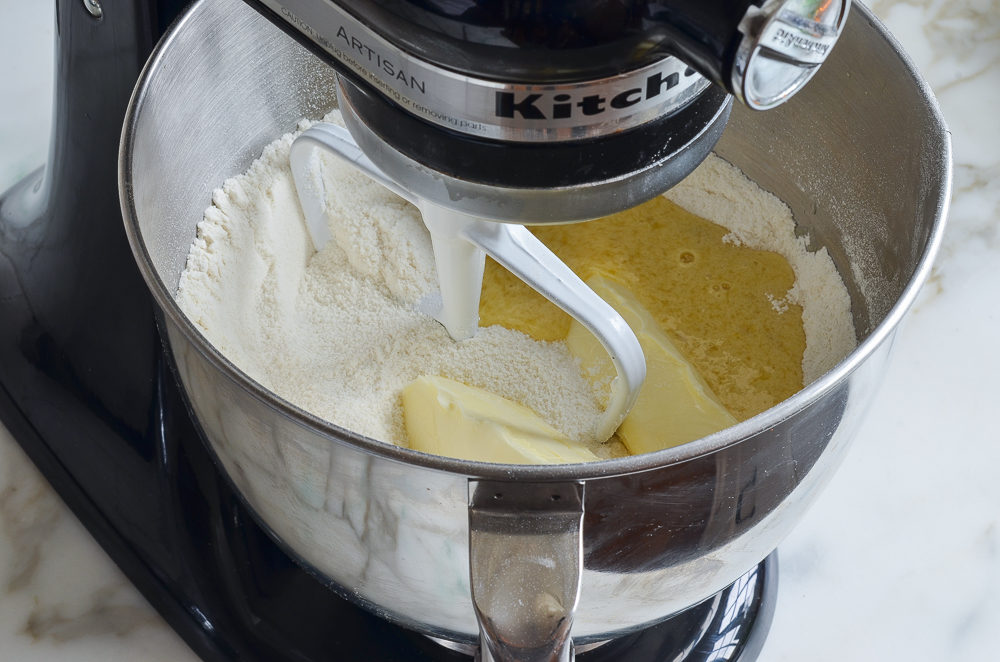
Mix on low speed until moistened but still a little crumbly, about 1 minute.
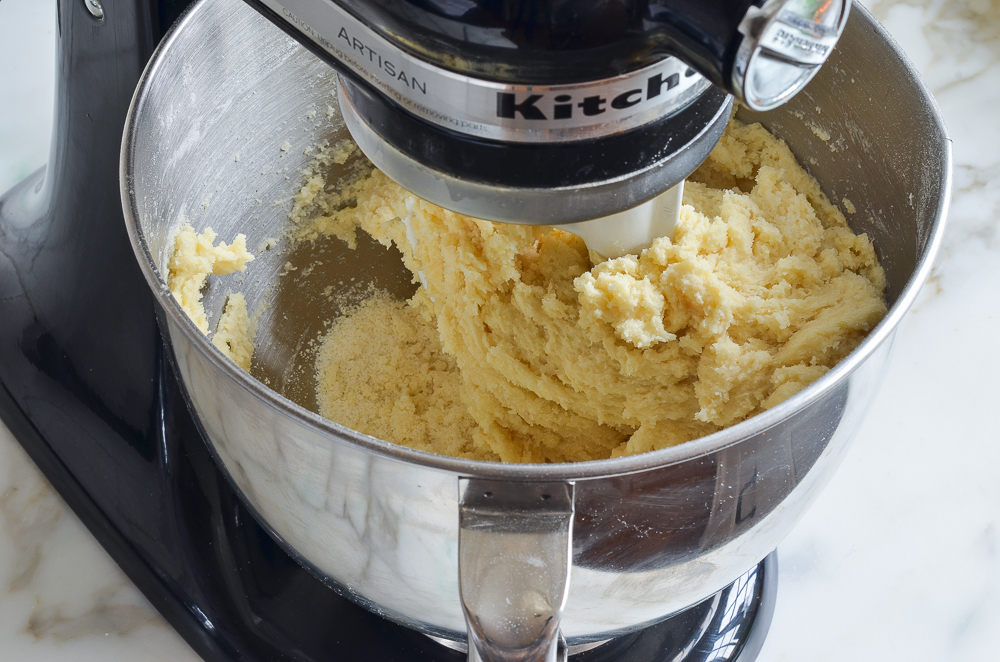
With the mixer running on low, gradually add the remaining buttermilk mixture.
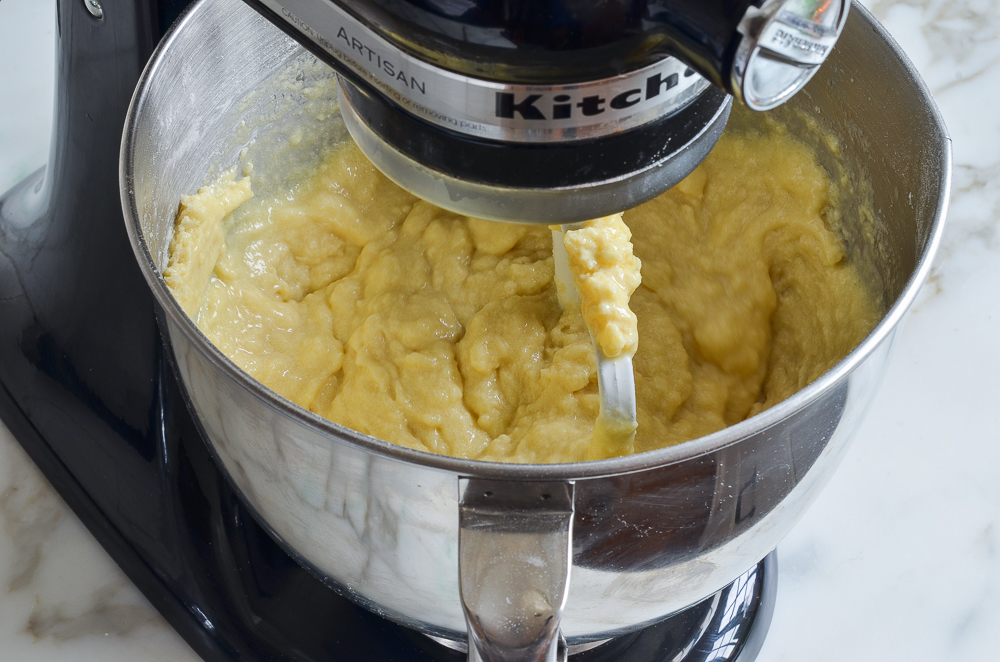
Increase the speed to medium and mix for three minutes, stopping once to scrape down the sides and bottom of the bowl with a rubber spatula. The batter should look pale and creamy.
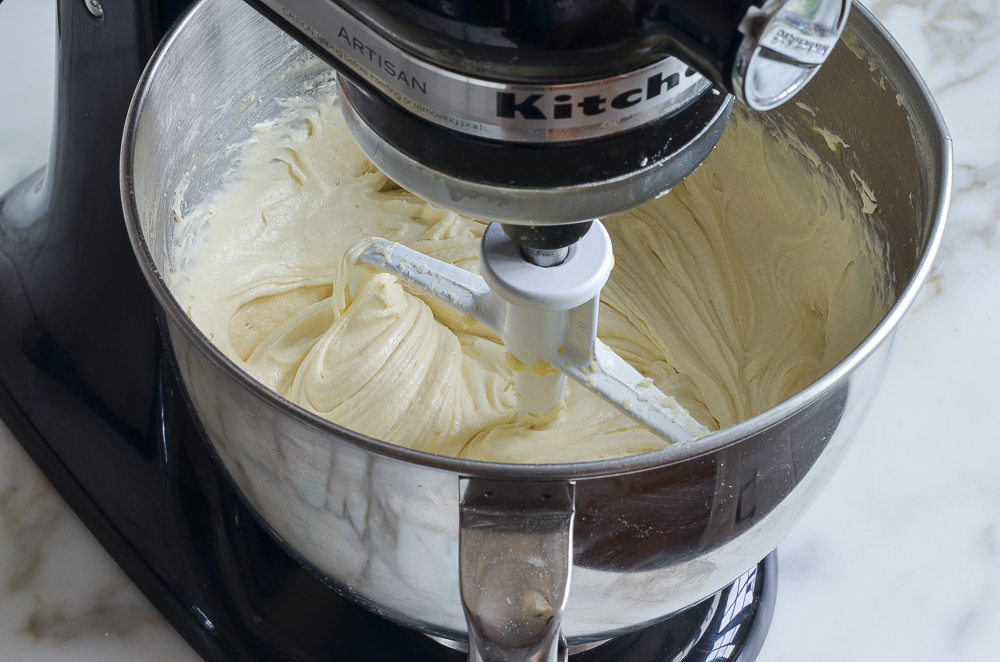
Transfer the batter to a Bundt pan sprayed with Baker’s Joy or Pam with Flour.
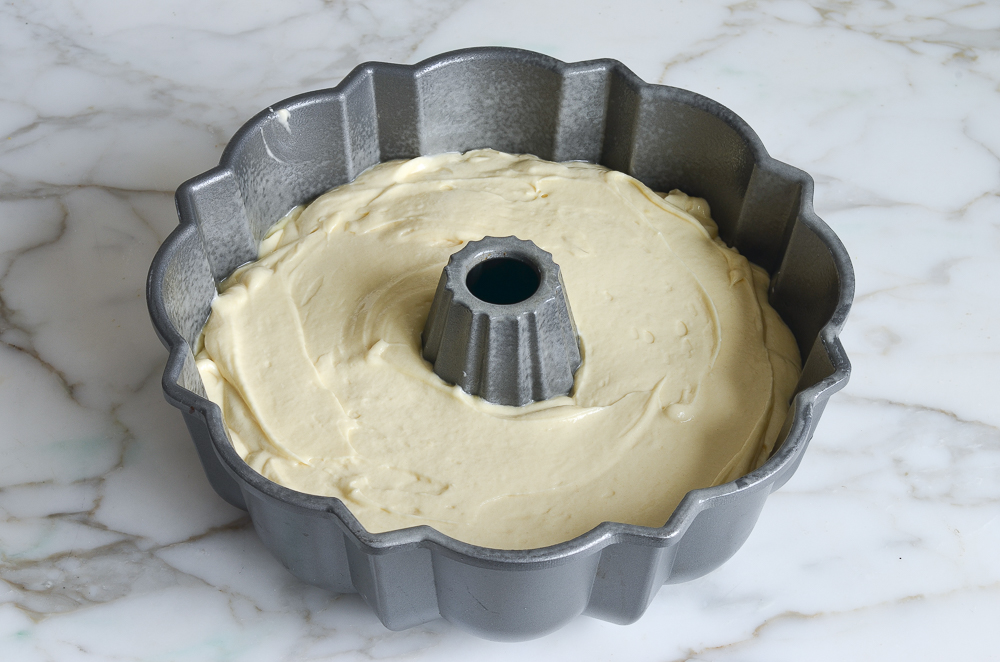
Bake for 1 hour, or until a cake tester comes out clean. Set the pan on a cooling rack.
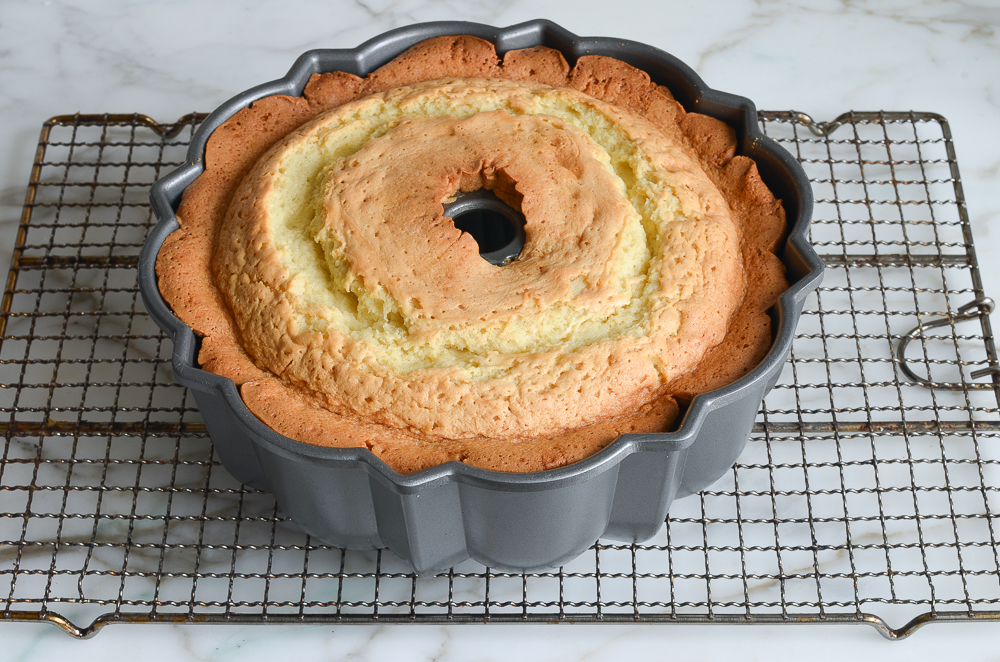
How to make the glaze
While the cake cools, make the glaze. In a small saucepan, combine the butter, granulated sugar, water, and vanilla.
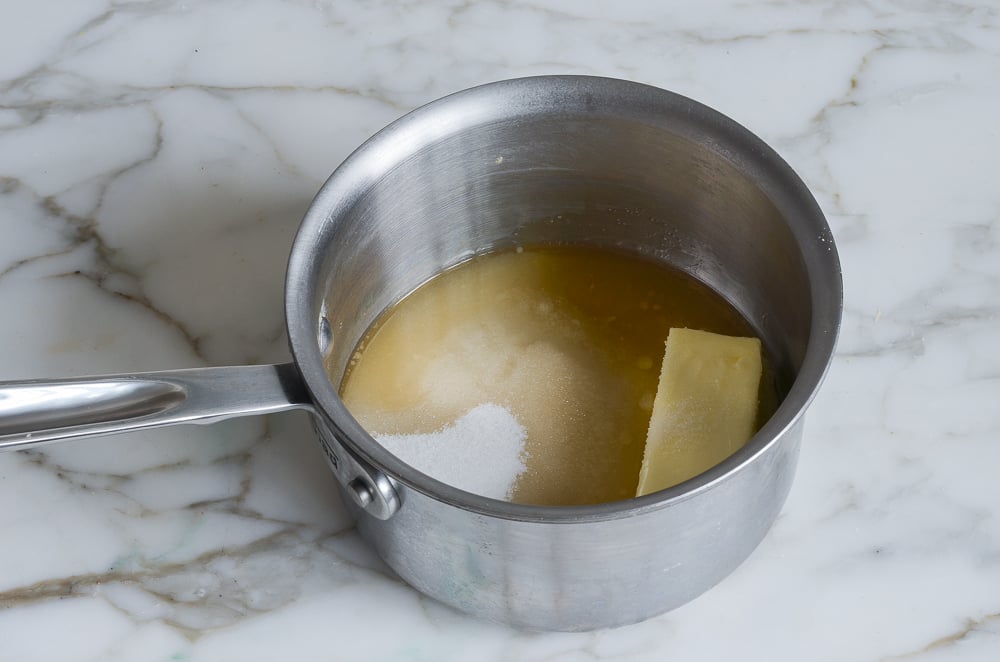
Bring to a boil, then reduce the heat and simmer until the sugar is dissolved, about 1 minute.
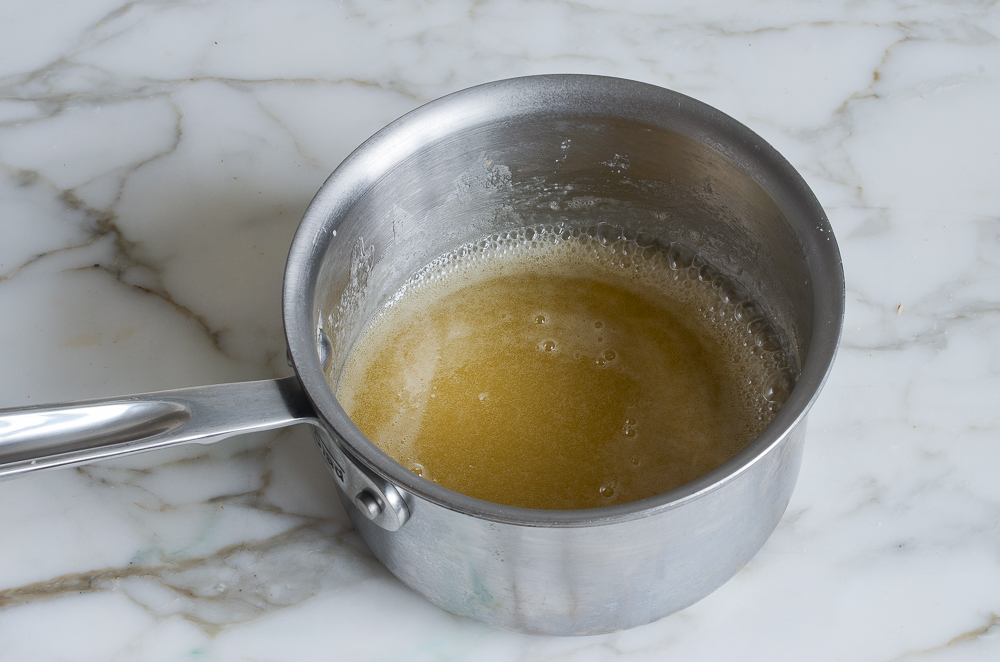
Using a skewer or toothpick, poke about 40 holes in the bottom of the still-warm cake, going about 3/4 of the way down.
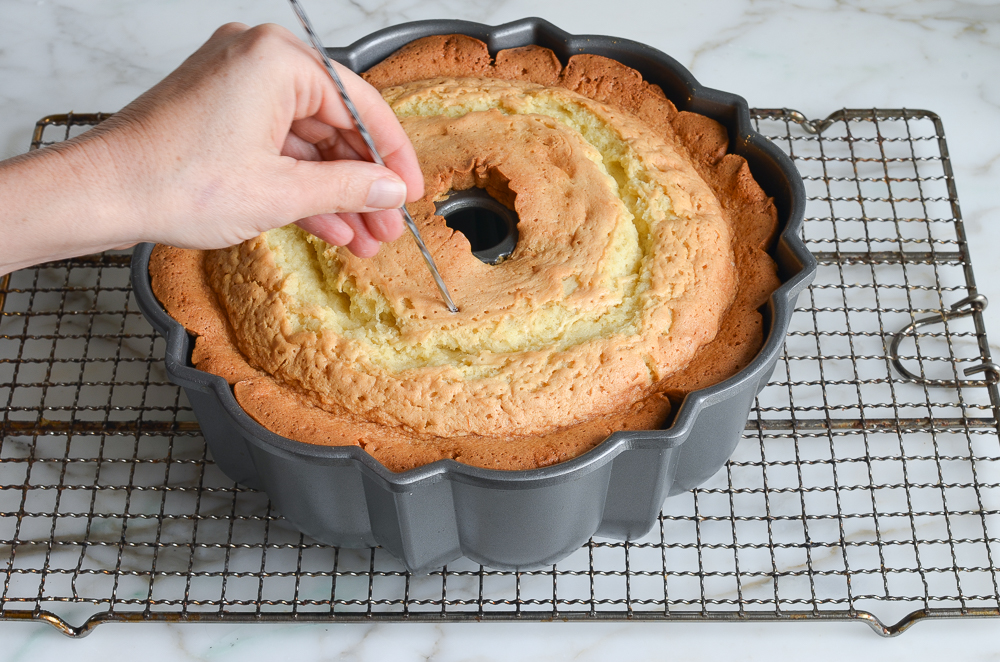
Spoon half of the glaze evenly over the bottom of the cake. 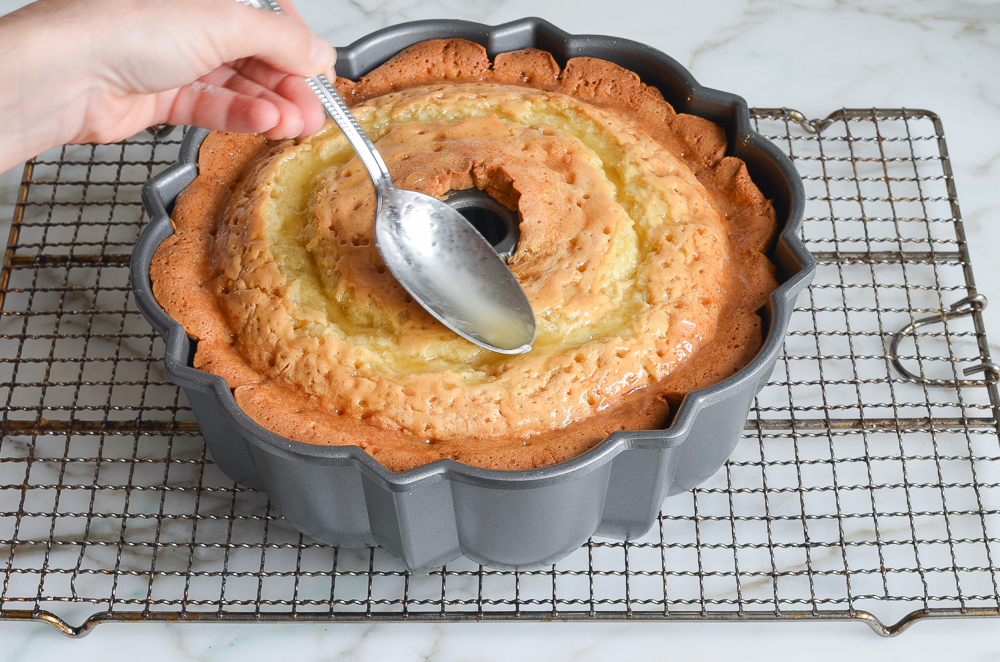
If the glaze starts to pool on the surface, poke more holes to help it sink in. Leave the cake on the rack to cool for 30 minutes.
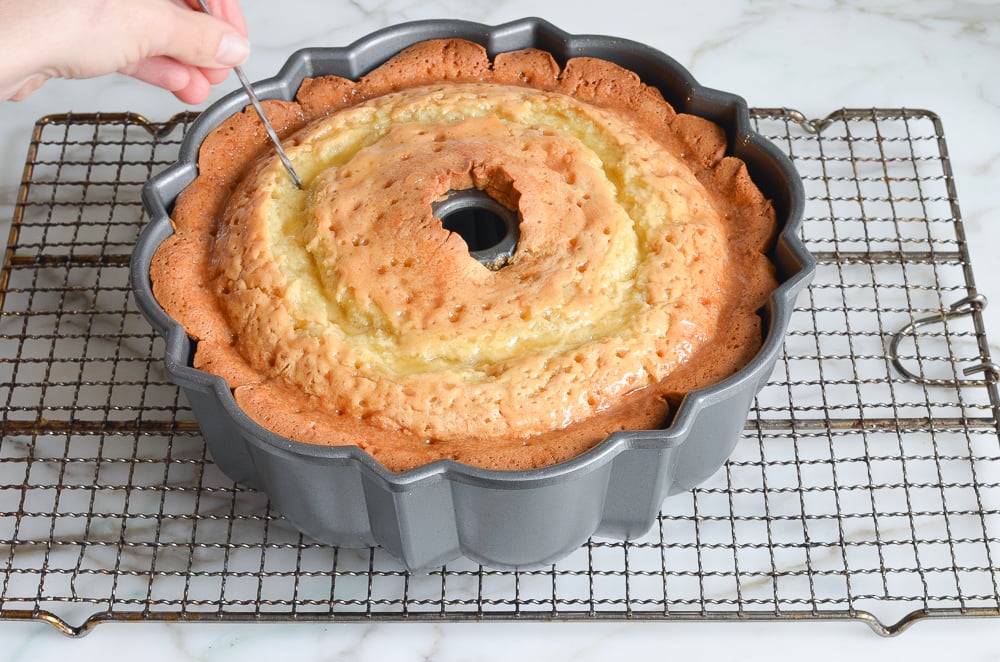
Invert the cake onto a serving platter.
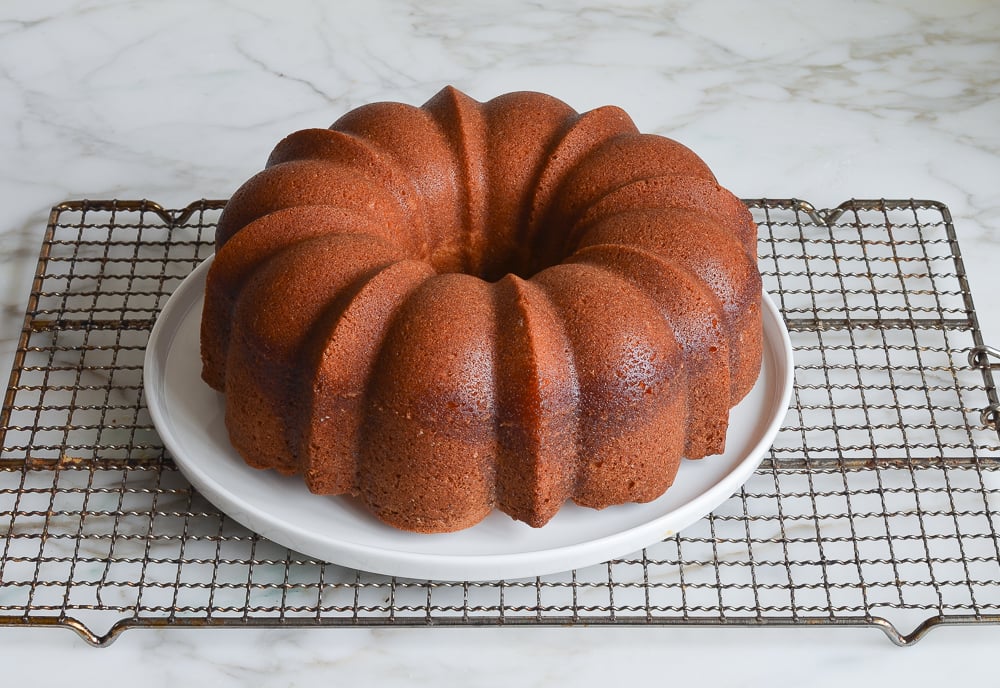
Brush the remaining glaze evenly over the top and sides of the cake, letting it soak in as you go. (Go slowly so that the cake absorbs the glaze.)
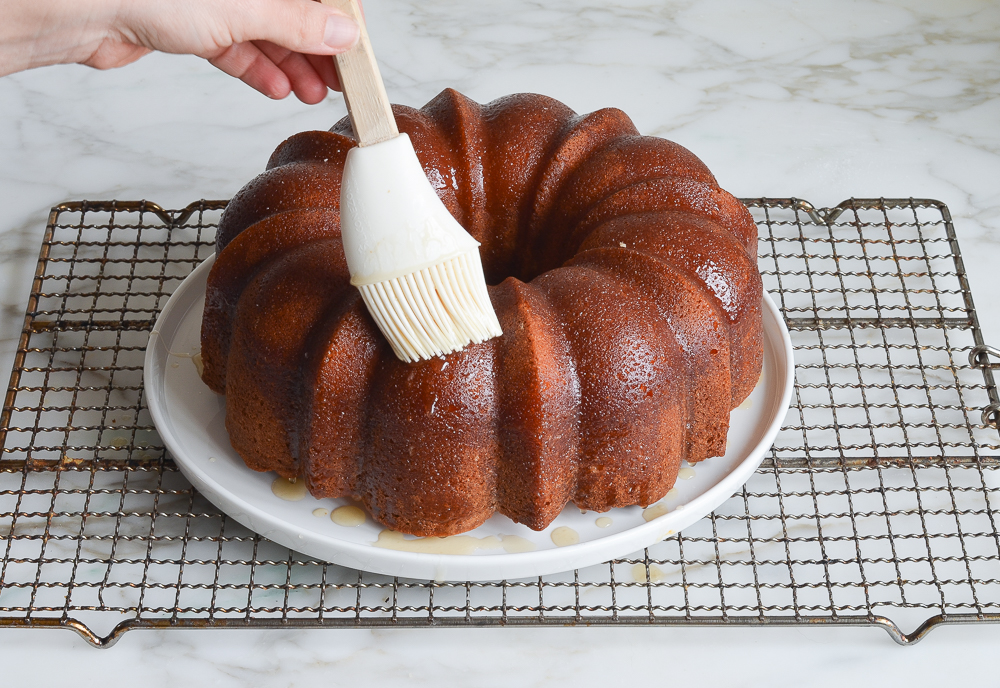
Let the cake sit for at least one hour before serving. Right before serving, use a fine sieve to dust the top of the cake with confectioners’ sugar.

You may also like
- Lemon Pound Cake
- Marble Cake
- Sour Cream Chocolate Chip Coffee Cake
- Rum Cake
- Sour Cream Coffe Cake with Cinnamon-Walnut Swirl
- Chocolate Bundt Cake
Kentucky Butter Cake
This old-fashioned vanilla butter cake drenched in syrup is the 1963 winner of the Pillsbury Bake-Off Contest.
Ingredients
For the Cake
- 1 cup buttermilk (see note)
- 4 large eggs
- 2 teaspoons vanilla extract
- 3 cups all-purpose flour, spooned into measuring cup and leveled-off
- 2 cups granulated sugar
- 1 teaspoon baking powder
- ½ teaspoon baking soda
- 1 teaspoon salt
- 1 cup (2 sticks) unsalted butter, softened
- Confectioners' sugar, for dusting
For the Glaze
- 5 tablespoons unsalted butter
- ¾ cup granulated sugar
- ¼ cup water
- 2 teaspoons vanilla extract
Instructions
For the Cake
- Preheat the oven to 325°F and set an oven rack in the middle position. Spray a 12-cup Bundt pan with nonstick cooking spray with flour, such as Baker's Joy or Pam with Flour.
- In a medium bowl, whisk together the buttermilk, eggs, and vanilla. Set aside. (Note that the mixture will start to look curdled as it sits; that's okay.)
- In the bowl of an electric mixer fitted with the paddle attachment or beaters, combine the flour, granulated sugar, baking powder, baking soda, and salt. Beat on low speed for 30 seconds to combine. Add the soft butter and half of the buttermilk mixture and mix on low speed until moistened but still a little crumbly, about 1 minute. With the mixer running on low, gradually add the remaining buttermilk mixture, then increase the speed to medium and mix for three minutes, stopping once to scrape down the sides and bottom of the bowl with a rubber spatula. The batter should look pale and creamy. Scrape down the sides and bottom of the bowl again, making sure the batter is evenly mixed.
- Transfer the batter to the prepared pan and bake for 1 hour, or until a cake tester comes out clean. Set the pan on a cooling rack. Using a skewer or toothpick, poke about 40 holes in the bottom of the still-warm cake, going about ¾ of the way down. Spoon half of the glaze evenly over the bottom of the cake. If the glaze starts to pool on the surface, poke more holes to help it sink in. Leave the cake on the rack to cool for 30 minutes.
- Invert the cake onto a serving platter. Brush or spoon the remaining glaze evenly over the top and sides of the cake, letting it soak in as you go. (Go slowly so that the glaze gets absorbed.) Let the cake sit for at least one hour before serving. Right before serving, use a fine sieve to dust the top of the cake with confectioners' sugar.
For the Glaze
- In a small saucepan, combine the butter, granulated sugar, water, and vanilla. Bring to a boil, then reduce the heat and simmer until the sugar is dissolved, about 1 minute.
- Note: If you’d like to make your own buttermilk, check out the easy method here.
- Make-Ahead Instructions: This cake keeps well for several days. Once cool, store in a cake dome (or cover with plastic wrap) at room temperature until ready to serve.
- Freezer-Friendly Instructions: The cake can be frozen for up to 3 months. After it is completely cooled, double-wrap it securely with aluminum foil or plastic freezer wrap, or place it in heavy-duty freezer bag. Thaw overnight on the countertop before serving.
Nutrition Information
Powered by ![]()
- Per serving (16 servings)
- Calories: 379
- Fat: 17 g
- Saturated fat: 10 g
- Carbohydrates: 53 g
- Sugar: 35 g
- Fiber: 1 g
- Protein: 5 g
- Sodium: 87 mg
- Cholesterol: 254 mg
This website is written and produced for informational purposes only. I am not a certified nutritionist and the nutritional data on this site has not been evaluated or approved by a nutritionist or the Food and Drug Administration. Nutritional information is offered as a courtesy and should not be construed as a guarantee. The data is calculated through an online nutritional calculator, Edamam.com. Although I do my best to provide accurate nutritional information, these figures should be considered estimates only. Varying factors such as product types or brands purchased, natural fluctuations in fresh produce, and the way ingredients are processed change the effective nutritional information in any given recipe. Furthermore, different online calculators provide different results depending on their own nutrition fact sources and algorithms. To obtain the most accurate nutritional information in a given recipe, you should calculate the nutritional information with the actual ingredients used in your recipe, using your preferred nutrition calculator.

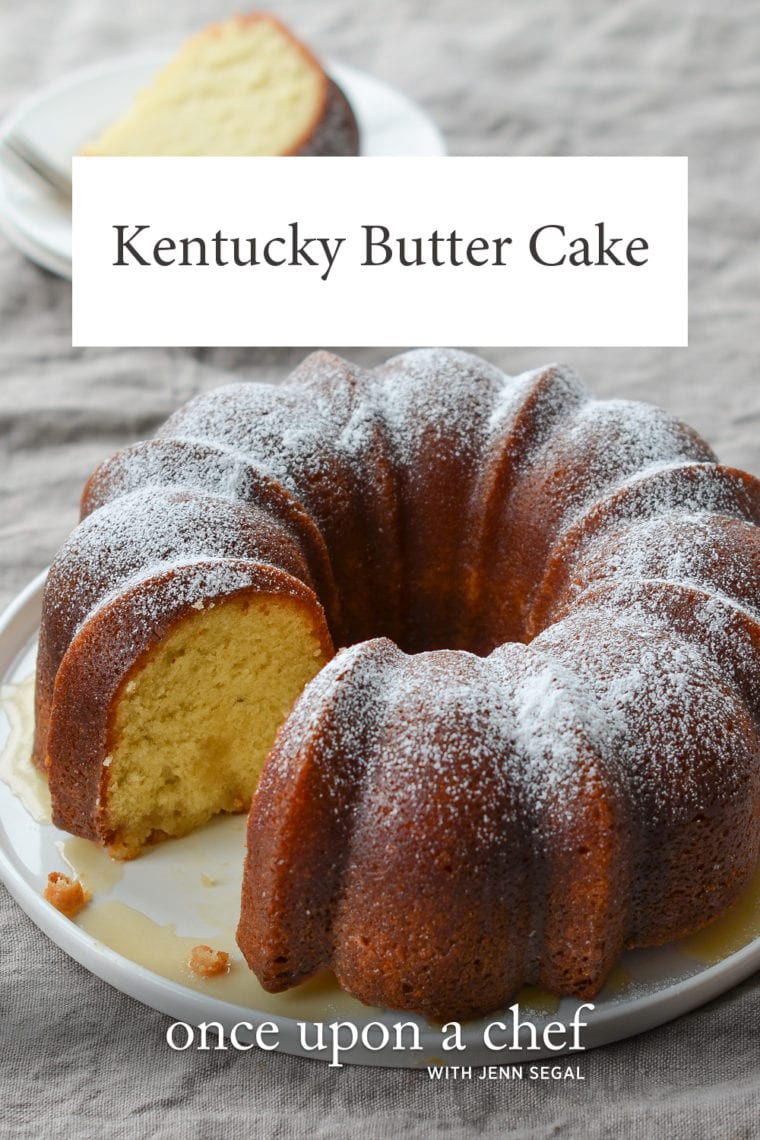
Replying to Jenn: When I made the cake in a glass 9 x 13 pan, I cooled the cake on a rack, washed the dish , re-inserted the cake and glazed the cake on the top (the original top of the cake). Served from the dish too as it was easier to transport. I did increase the glaze by half , but really, I think sweet registers differently with folks (just read reviews on different frostings that some think are perfect and others are on sugar overload). I did not glaze the bottom of the cake because it simply never occurred to me 🙂 until I read your directions. So I made your recipe (exactly and in a bundt pan) for Father’s Day and it was light and delicious and several folks liked that the cake had glaze on the bottom. Thanks again!
Thanks so much for the follow-up, Ann, and glad to hear that it turned out well! 🙂
I have the same exact recipe but it says beat the butter and sugar for 5 minutes are Light and fluffy, then you add four eggs all at once and beat for 5 minutes then you add all the flour baking soda and powder salt at one time and you beat that for 10 minutes lastly you stir in the vanilla and you bake at 325
I made this cake, along with many other great desserts, for a graduation party. The graduate (mind you– foodie and declared chocolate lover) LOVED this favorite butter cake, raved about it for a good two weeks, and has begged me to make 2 cakes– one cake because she “won’t be able to hold off” while the second cake “ages.” (This cake gets BETTER as the days pass. Made this cake 5 days ago? Consider yourself lucky.) Thank you Jenn for being my favorite chef, for bringing great, clear and precise recipes to your readers. We love you so much! Heading off now to make two Kentucky Butter Cakes.
❤️❤️
I have made this exact recipe for several years and it is always a hit. As I was reading reviews, I thought I would add my experience: have baked this in a bundt pan but also in a 9 x 13 glass pan (for about 43 minutes until cake was golden) with good results. I did find that the amount of glaze was just shy of covering the entire cake so I increase the glaze by half. The major difference between this recipe and the one I use is that this recipe calls for glazing the bottom of the cake which sounds delicious. So, I guess more glaze would be needed. Perhaps Jenn could weigh in with the proper proportions. I just wanted to let readers know that the recipe does work in a glass dish.
Hi Ann, thanks for weighing in and letting readers know that this will work in a 9 x 13 pan. Did you invert the pan and serve the cake that way (instead of cutting into squares and serving from the dish)? I assume that must be the case if you’re talking about glazing both the top and bottom. If so, I’d suggest making about 1 1/2 times the recipe for the glaze. I think that should be sufficient. Hope that helps!
Excellent recipe. First time making a bundt cake and will be making again. It’s a bit more time consuming than I could handle with a newborn in the house so I’ll wait until baby is a bit older and less demanding to make it again, but I most definitely will! Next time I’ll add a touch of whiskey 😉
Also, it freezes really well. I cut slices that I wrapped individually in foil and it thaws easily and is delicious. I used a gluten free Flour substitute that I always use for any recipe calling for flour and it worked out beautifully. I love Jenn’s recipes, you really can’t go wrong!
Could I bake this in a loaf pan? 🙂
Sure! I think two 8.5 x 4.5-in loaf pans would work. Enjoy!
My whole family loved this cake. Added a bit of bourbon to the glaze and it was outstanding.
Thanks for sharing.
Delicious!! I added 1/4 cup 1835 Bourbon Whiskey (which has rich flavors of oak, brown sugar, vanilla, caramel and spice) to the batter and 1/4 cup to the glaze. I made a half batch and baked it for 50 minutes. Perfectly well done! Moist, heavenly, etc, etc. Bravo!
This cake is super easy to put together. My family absolutely loved it. I will definitely make it again.
This recipe is perfection and so easy to make. The cake is mouthwateringly tender and the crumb is even and moist. The glaze adds the prefect donut glaze crispness.
I fixed the Kentucky Butter cake for my sewing group yesterday and I wish you could have heard the raves. The girls loved it. Thank you for your recipes once again. I love trying new recipes and many of yours are in my keeper file.
Thank you,
Dianne Wilson
❤️
Do I glaze it before freezing? Thank you for such an awesome resource … your site is just the best.
You’re so welcome, Amaris!! Yes, I’d glaze it before freezing. Just make sure that the glaze is completely dry before you wrap the cake to freeze. Hope you enjoy!